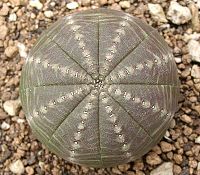
Lessons from linking bio‐ and ecological traits to stoichiometric traits in stream macroinvertebrates
Sign Up to like & getrecommendations! Published in 2022 at "Ecology and Evolution"
DOI: 10.1002/ece3.9605
Abstract: Abstract Ecologists rely on various functional traits when investigating the functioning of ecological systems and its responses to global changes. Changing nutrient levels, for example, can affect taxa expressing different trait combinations in various ways,… read more here.
Keywords: trait; ecological traits; bio ecological; stoichiometric traits ... See more keywords

Ecological traits predict population changes in moths
Sign Up to like & getrecommendations! Published in 2019 at "Biological Conservation"
DOI: 10.1016/j.biocon.2019.02.023
Abstract: Abstract Understanding the ecological traits which predispose species to local or global extinction allows for more effective pre-emptive conservation management interventions. Insect population declines are a major facet of the global biodiversity crisis, yet even… read more here.
Keywords: ecological traits; predict population; traits predict; population ... See more keywords

High‐resolution 3D forest structure explains ecomorphological trait variation in assemblages of saproxylic beetles
Sign Up to like & getrecommendations! Published in 2022 at "Functional Ecology"
DOI: 10.1111/1365-2435.14188
Abstract: Abstract Climate, topography and the 3D structure of forests are major drivers affecting local species communities. However, little is known about how the specific functional traits of saproxylic (wood‐living) beetles, involved in the recycling of… read more here.
Keywords: structure; morphological traits; variation; saproxylic beetles ... See more keywords

Ecological traits modulate bird species responses to forest fragmentation in an Amazonian anthropogenic archipelago
Sign Up to like & getrecommendations! Published in 2018 at "Diversity and Distributions"
DOI: 10.1111/ddi.12689
Abstract: Aim: We assessed patterns of avian species loss and the role of morpho-ecological traits in explaining species vulnerability to forest fragmentation in an anthropogenic island system. We also contrasted observed and detectability-corrected estimates of island… read more here.
Keywords: forest fragmentation; island occupancy; ecological traits; occupancy ... See more keywords

Improving predictions of invasive fish ranges combining functional and ecological traits with environmental suitability under climate change scenarios.
Sign Up to like & getrecommendations! Published in 2021 at "Global change biology"
DOI: 10.1111/gcb.15896
Abstract: Biological invasions represent one of the main threats to marine biodiversity. From a conservation perspective, especially in the context of increasing sea warming, it is critical to examine the suitability potential of geographical areas for… read more here.
Keywords: suitability; environmental suitability; sea; change ... See more keywords

Across the highest mountain on Earth: discordant phylogeographic patterns and recent dispersal of Tibetan stone loaches (Triplophysa) in the Himalayas.
Sign Up to like & getrecommendations! Published in 2022 at "Journal of fish biology"
DOI: 10.1111/jfb.15296
Abstract: Phylogeographic congruence among co-distributed taxa is regarded as an inherent inference to vicariance events. However, incongruent patterns of contemporary lineage divergence among taxa indicated that species differ in their response to common past events. To… read more here.
Keywords: dispersal; tibetan stone; stone loaches; stone ... See more keywords

Comparison of the Ecological Traits and Boring Densities of Aromia bungii (Faldermann, 1835) (Coleoptera: Cerambycidae) in Two Host Tree Species
Sign Up to like & getrecommendations! Published in 2022 at "Insects"
DOI: 10.3390/insects13020151
Abstract: Simple Summary The red-necked longhorn beetle Aromia bungii is an invasive, wood-boring pest that infests Rosaceae trees. Its main host species in Japan are flowering cherry (Cerasus × yedoensis ‘Somei-yoshino’) and peach (Prunus persica) trees.… read more here.
Keywords: aromia bungii; bungii; persica; two host ... See more keywords